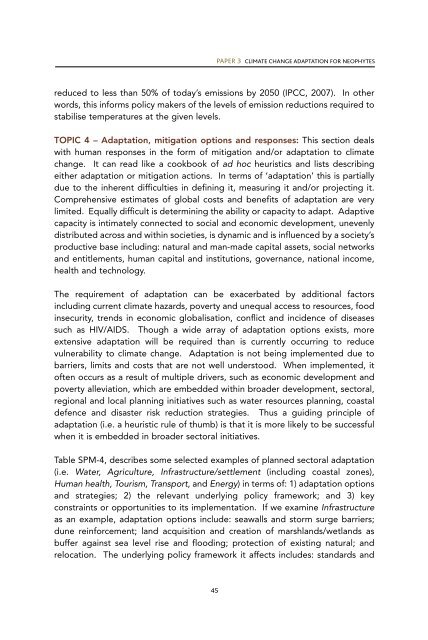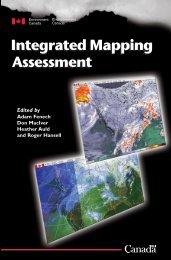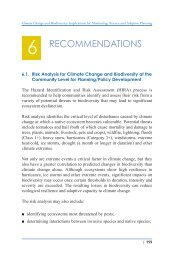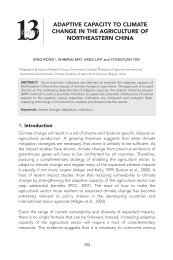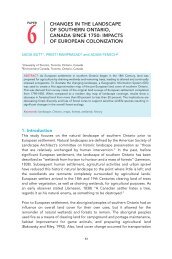Paper 3: Climate Change Adaptation for Neophytes - UPEI Projects
Paper 3: Climate Change Adaptation for Neophytes - UPEI Projects
Paper 3: Climate Change Adaptation for Neophytes - UPEI Projects
Create successful ePaper yourself
Turn your PDF publications into a flip-book with our unique Google optimized e-Paper software.
PAPER 3 CLIMATE CHANGE ADAPTATION FOR NEOPHYTESreduced to less than 50% of today’s emissions by 2050 (IPCC, 2007). In otherwords, this in<strong>for</strong>ms policy makers of the levels of emission reductions required tostabilise temperatures at the given levels.TOPIC 4 – <strong>Adaptation</strong>, mitigation options and responses: This section dealswith human responses in the <strong>for</strong>m of mitigation and/or adaptation to climatechange. It can read like a cookbook of ad hoc heuristics and lists describingeither adaptation or mitigation actions. In terms of ‘adaptation’ this is partiallydue to the inherent difficulties in defining it, measuring it and/or projecting it.Comprehensive estimates of global costs and benefits of adaptation are verylimited. Equally difficult is determining the ability or capacity to adapt. Adaptivecapacity is intimately connected to social and economic development, unevenlydistributed across and within societies, is dynamic and is influenced by a society’sproductive base including: natural and man-made capital assets, social networksand entitlements, human capital and institutions, governance, national income,health and technology.The requirement of adaptation can be exacerbated by additional factorsincluding current climate hazards, poverty and unequal access to resources, foodinsecurity, trends in economic globalisation, conflict and incidence of diseasessuch as HIV/AIDS. Though a wide array of adaptation options exists, moreextensive adaptation will be required than is currently occurring to reducevulnerability to climate change. <strong>Adaptation</strong> is not being implemented due tobarriers, limits and costs that are not well understood. When implemented, itoften occurs as a result of multiple drivers, such as economic development andpoverty alleviation, which are embedded within broader development, sectoral,regional and local planning initiatives such as water resources planning, coastaldefence and disaster risk reduction strategies. Thus a guiding principle ofadaptation (i.e. a heuristic rule of thumb) is that it is more likely to be successfulwhen it is embedded in broader sectoral initiatives.Table SPM-4, describes some selected examples of planned sectoral adaptation(i.e. Water, Agriculture, Infrastructure/settlement (including coastal zones),Human health, Tourism, Transport, and Energy) in terms of: 1) adaptation optionsand strategies; 2) the relevant underlying policy framework; and 3) keyconstraints or opportunities to its implementation. If we examine Infrastructureas an example, adaptation options include: seawalls and storm surge barriers;dune rein<strong>for</strong>cement; land acquisition and creation of marshlands/wetlands asbuffer against sea level rise and flooding; protection of existing natural; andrelocation. The underlying policy framework it affects includes: standards and45


